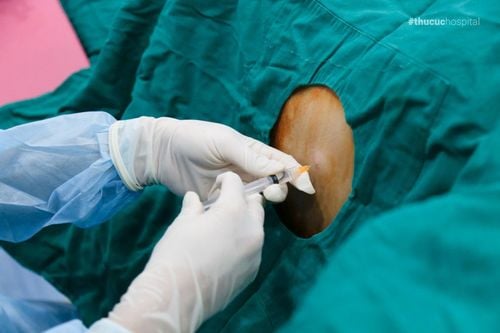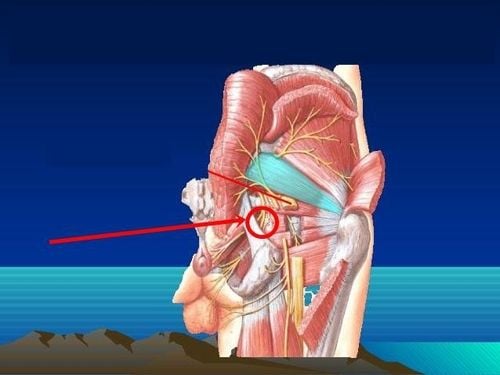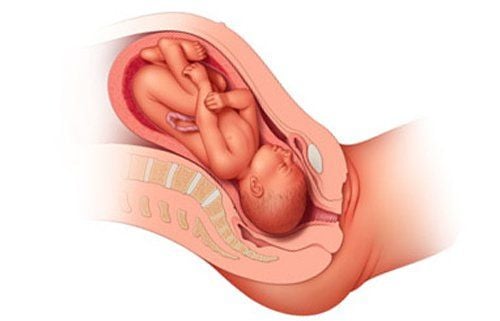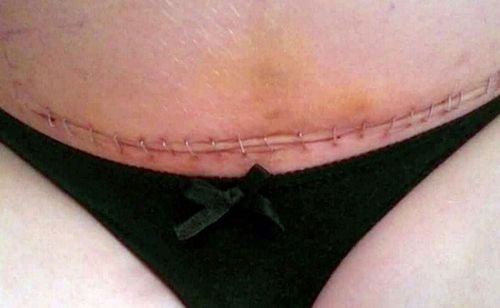This is an automatically translated article.
The article was professionally consulted with Master, Doctor Nguyen Van Thanh - Obstetrician and Gynecologist - Department of Obstetrics and Gynecology - Vinmec Nha Trang International General Hospital.In some cases, an obstetrician must help a pregnant woman who is giving birth vaginally switch to a cesarean section to reduce the risk and ensure the health of the mother and baby during labor.
1. Normal birth
1.1. Indications for normal delivery when: The mother's health is good enough to be able to give birth successfully. The mother does not have factors that prevent the baby's way out such as uterine fibroids, prostate tumor... She does not have urinary tract infections such as gonorrhea, syphilis, genital warts.. The health of the fetus is good, no prolapse of the umbilical cord, no fetal distress. Note that if you have had a cesarean section before, you will only be allowed to have a vaginal birth when you have been examined by a specialist and are healthy enough to have a normal birth.1.2. Advantages and disadvantages of vaginal delivery Advantages of vaginal birth:
Normal delivery, the mother's body recovers faster than a cesarean section. After giving birth, the mother can walk normally, take care of the baby and breastfeed right after the first 2 hours after birth. Minimizing the side effects of anesthetics and aids in caesarean section. Research has shown that in the mother's birth canal there are beneficial bacteria for the baby's body and when the baby is out through the vaginal process, the baby will receive these beneficial bacteria, and at the same time make the baby healthy. strengthen the immune system of children. The structure of a woman's vagina is inherently narrow, so during childbirth, the contractions of the uterus and vagina will also act on the baby's chest as a push to make the lung cysts expand, expelling. lung fluid out and facilitate the automatic respiration of the baby right after birth. In addition to the above advantages, vaginal birth also has some notable disadvantages:
Having a normal birth will lose a lot of strength, and may even be exhausted after giving birth. Risk of perineal incision. Labor can happen suddenly at any time without any prior preparation.

2. Caesarean section
2.1. Indications for cesarean section Mother's health is weak Pregnant women with abnormal pelvis. The position of the fetus is not favorable for normal delivery such as breech, transverse, breech... The mother has urogenital infections such as gonorrhea, syphilis, genital warts... or tumors. Uterine fibroids, prostate tumors obstruct the child's exit. Having gone into labor but the uterus does not contract or the force and frequency of contractions are too weak, which does not guarantee a smooth birth. There is a history of previous caesarean section and the old incision has not yet fully recovered. The fetus is too large (Usually indicated by caesarean section when the fetus weighs 4 kg or more). Cases of fetal distress, multiple pregnancies. 2.2. Common complications after caesarean section Complications during caesarean section:Bleeding due to touching the uterine artery or uterine atony. May cause damage to the uterus and nearby parts such as bladder, urethra... Uterine atony. Complications after cesarean section:
Fever may appear in 24-48 hours after cesarean section. If fever is more than 48 hours, you should notify your doctor and medical professional to find out the cause and handle it promptly. Erection of milk is a common phenomenon after cesarean section occurring on the 3rd and 4th day after birth, causing chest pain and even fever and lymphadenopathy if prolonged. There may be inflammation or hematoma at the incision site. Scars can form at the incision, causing unsightly beauty, and will make it difficult for future births. Separation of fluid, also known as a collection of fluid in the uterus due to cesarean section, reduces the ability of the uterus to contract, thereby reducing the process of expelling the fluid inside the uterus out, causing inflammation for a long time. infection. May cause infection to the surrounding organs. Note and monitor closely for complications left by anesthesia after surgery.
3. Which cases of normal birth change to cesarean section?
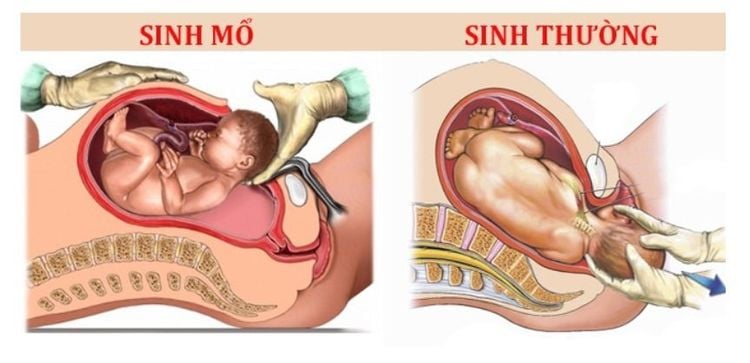
From the mother's side:
In case the mother is healthy enough to give birth naturally but her amniotic fluid is depleted. This will reduce the activity of the fetus during the passage out, and will reduce the ability of the uterine muscles to contract. It is necessary to switch to a cesarean section immediately to ensure the safety of the baby. Pregnant women are exhausted because labor takes place for too long. During labor, suddenly the uterine contractions stopped, the labor pain stopped. If this situation lasts for a long time, it will cause asphyxiation for the baby, so it is necessary to switch to cesarean section immediately. There are signs of the occurrence of obstetric complications such as: preeclampsia, gestational hypertension, uterine rupture... From the fetal side:
Baby is asphyxiated by the umbilical cord wrapped around the neck. There are cases where the fetus is wrapped around the neck 1-2 times by the umbilical cord and can be delivered normally, but during labor, the movement of the baby can cause the umbilical cord to be tightened at the neck, increasing the risk of suffocation. due to lack of oxygen. It is necessary to appoint a timely caesarean to keep the child safe. Fetal failure in labor is a condition in which the fetus does not receive enough oxygen during labor, which can lead to stillbirth or postpartum neurological complications such as growth retardation, epilepsy, etc. If there are signs of fetal distress during labor, appoint a cesarean section immediately to ensure the life of both mother and child and minimize future complications. Head or fetus is too large: during vaginal delivery, perineal dilation is a very important factor in bringing the baby out. However, this dilation only has a certain limit, for fetuses weighing more than 4kg or the head of the fetus is too big, vaginal birth will be extremely difficult, causing tearing of the perineum, affecting health. mother and if labor is prolonged it can cause asphyxia in the baby. Therefore, cesarean delivery is the best option.

With an advanced, modern painless delivery method and a team of highly qualified anesthesiologists, pregnant women will have a completely different painless birth experience at Vinmec. For women who give birth normally, they will be numbed with an ultrasound machine (neuraxial anesthesia). For pregnant women who have had a caesarean section, they will be anesthetized by an ultrasound machine in the treatment of postoperative pain. The most recent results of analgesia evaluation showed that: All pregnant women who gave birth by caesarean section did not have to use morphine, and post-partum pain when moving and living was almost no longer recorded.
Please dial HOTLINE for more information or register for an appointment HERE. Download MyVinmec app to make appointments faster and to manage your bookings easily.





